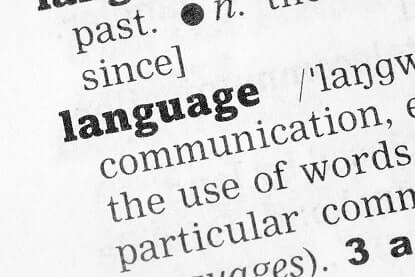The power of persuasive language – tips and techniques
Creating great content is essential for brands and businesses as they look to engage and retain their customers, with the power of persuasive language more important than ever in influencing your audience to do something you want them to do – whether that is to convert on an e-commerce site, or sign up to receive notifications or updates from your email marketing campaign or blog.

Persuasive language techniques
The ability to write effective, engaging copy is a skill which can take several years of study and practice to hone, but with our recommended tips and techniques you can boost the persuasive power of your branded copy.
Techniques to implement to emphasise the persuasiveness of your copy include:
- Consistency – build trust and integrity to help your existing and prospective customers identify with your brand
- Repetition – make your point in different ways throughout your text, using target keywords, evidence and supporting points to resonate with your reader
- Comparisons – use analogies and similes to relate the scenario you are describing to something that your reader already accepts as true
- Agitate then resolve – identify the issue or problem your reader is facing, empathise with them, then offer your solution
These techniques are simple to implement, and a powerful means of guiding your reader to see things the way you wish them to – the ultimate end goal of persuasive language.
Persuasive words
Whilst persuasive techniques are key to successful content, there are certain ‘power words’ that hold more sway over your reader’s decision-making process than others. You can implement these chosen words to great effect in your copy.
Some of the most persuasive words at our disposal include:
- ‘You’ – we love to see our name or an otherwise personalised element on a page or within a piece of content as it makes us feel engaged, which ultimately builds our trust in a brand. Personalisation can be used to great effect in brand emails to create an affinity with your customer
- ‘Free’ – we all love to get something for nothing! Offer access to a guide or link for free, with the aim of upselling your customer into a transaction or conversion. Do be careful not to undervalue your products or services
- ‘Because’ – giving a reason for an action, such as ‘can I go first, because I’m in a rush?’ is more likely to succeed – or persuade – than just ‘can I go first?’, as we like to have reasons for what we do. Use this technique in your copy to let your customer know how they can benefit from what you are offering
- ‘New’ – we love getting or seeing something before other people, as our brains respond to novelty. Keep your products and services fresh and update your messaging regularly to keep your customers coming back to you
When you are optimising your copy with chosen persuasive terms, it’s important to understand why these words are persuasive, as this will help you to utilise them fully.
You should also make sure you use them in a context that makes sense to your audience and aligns with your brand. Don’t use these words where they don’t make sense and, similarly, avoid keyword stuffing, as this reads unnaturally and may also result in a content penalty.
Frame your language
Your primary aim is to use persuasive language techniques to encourage your customer to take the action you wish. You can frame the language you use in your copy to encourage this further.
A simple switch of a word can change how your reader perceives what you are saying, for example:
• Use ‘inexpensive’ rather than ‘cheap’
• Use ‘challenging’ rather than ‘difficult’
When you are writing with the aim to persuade, use clear, simple language to make it obvious what you want your reader to do. Simple words can be the most effective.



